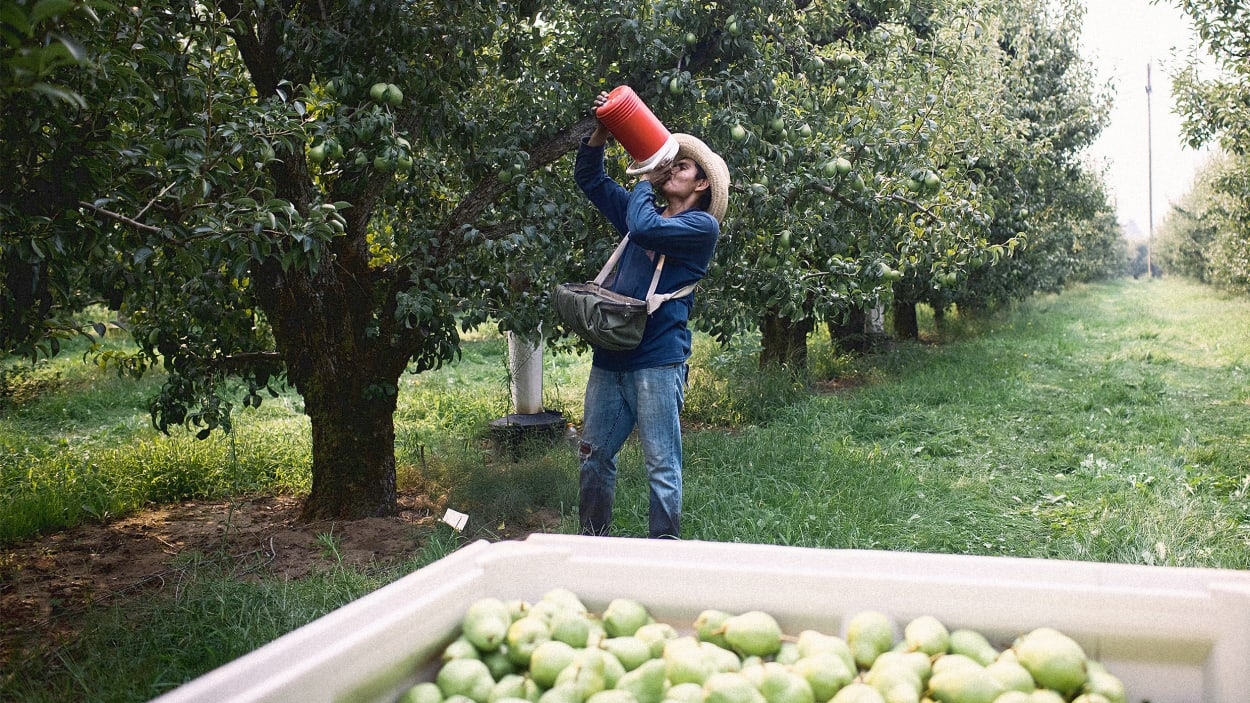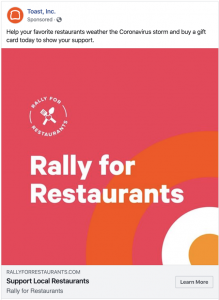By Audrey Carleton—Nexus Media News
This article originally appeared in Nexus Media News and was made possible by a grant from the Open Society Foundations.
Extreme heat—a phenomenon that is increasing in severity and frequency as the planet warms—is the deadliest weather-related disaster, killing more than 5,600 people each year, according to some estimates.
It attacks the elderly, the isolated, and workers—particularly those laboring outside. A farmworker in the United States is 35 times more likely to die from heat-related illness than workers in other industries. It’s responsible for some 170,000 work-related injuries—on farms, as well as in warehouses, delivery trucks, restaurants, and at construction sites—every year, according to a recent analysis of workers’ compensation claims. Black and Hispanic workers account for a disproportionate number of heat-related deaths on the job.
Advocates have spent years pushing for protections that reflect the growing threat of extreme heat. Now, some may be in sight. Last year, the Biden administration issued an executive order calling on the Occupational Safety and Health Administration (OSHA) to create a federal workplace heat standard and prioritize heat-related inspections and interventions. The order was issued a few months after similar legislation was introduced in the Senate.
Advocates like Antonio Tovar, senior policy associate at the National Family Farm Coalition, say such rules could save hundreds of lives each year.
“We believe that workers and farmers deserve livable wages and [humane] conditions for work,” said Tovar, who has spent years interviewing farmworkers in the Southeastern United States.
Heat regulations could require employers to offer paid rest breaks, provide ample water and shade, and abandon payment schemes that disincentivize breaks, Tovar said. It could also protect whistleblowers. Regulators are currently reviewing public comments from workers, employers, and trade groups on the proposed rule, which advocates are pushing to go into effect within the next three to four years. (New labor standards can often take up to a decade to go into effect.)
Many of the workers’ comments paint a picture of an unregulated climate disaster.

One 45-year-old farmworker, Carmen, who withheld her last name out of fear of retaliation, described a workplace that discouraged workers from staying hydrated. “They scold us if we ask for time to drink/get water,” she reported, adding that she is often placed in fields far from toilets, a choice she believed her employer makes, “with the intention that we don’t waste time.”
“We have to work too fast to take the time to drink,” she wrote, adding that contractors do not even provide workers with drinking cups. She said that a friend of hers, also a farmworker, died from heat exhaustion.
A postal worker described “callous treatment of employees working in the heat.” The commenter described working in a warehouse so hot that, “industrial crayons we used to mark the packages all melted.” A former restaurant worker recounted “countless hours in unbearably hot kitchens” with broken thermostats. “There were many days I thought I might pass out,” she wrote.
Federal labor laws can make a difference. Workplace fatalities plummeted following the creation of OSHA, from 18 per 100,000 workers in 1970 to just over 3 per 100,000 in 2020, according to federal statistics. At the state level, California, Washington, Oregon, Colorado, and Minnesota have instated worker heat regulations; advocates say these state laws can serve as an example for new federal rules.
But at least 54 major trade groups—including the American Farm Bureau Federation, a large lobbying group with a history of opposing climate action—have issued comments opposing a federal heat standard, or at least a rigorous one, according to an analysis by Juanita Constible, a senior advocate at the Natural Resources Defense Council (NRDC).
“It’s a lot of the same playbook we see for environmental regulations and laws,” Constible said. “‘Woe is me. This is going to be the death of my industry. If people don’t want to work here, they should find another job.’”
In comments to the agency, some of these trade groups make dubious medical claims and shift responsibility for heat-related illness onto the worker. Others have joined a coalition with a name critics call misleading—the Employers Heat Illness Prevention Coalition. The coalition has argued against a tight federal heat standard.
The National Cotton Council argued that many heat-related illnesses “. . . result from the modern employee lifestyle in an advanced 21st century global economy. . . . Present-day luxuries such as air conditioning is present in most all American households and public facilities, making it more difficult to face the severe change in temperatures to move from a cool dwelling or vehicle to the heat of a field.”
In fact, there is no scientific evidence to suggest that air-conditioning negatively affects the heat acclimatization process in agricultural workers, said Margaret Morrissey, director of occupational and military safety at the University of Connecticut. Morrissey filed her own comment in support of a strong regulation and told Nexus Media News that the Cotton Council’s claim “makes little sense.”
“A majority of U.S agriculture workers are low-income workers with no access to central air-conditioning,” she said. “This claim is particularly dangerous, as agriculture workers work for prolonged hours a day for consecutive days in a row.”
Cotton Council spokesperson Marjory Walker told Nexus Media News that while the group prioritizes worker safety, it opposes a universal heat standard across industries, arguing that it would be unjustifiably burdensome to the cotton industry.
The National Council of Farmer Cooperatives argued against “prescriptive time frames for breaks,” suggesting that a better approach to reducing heat-related illnesses would be to “develop materials that educate employees on the importance of making healthy choices outside the workplace.”
Many associations, like the Farm Bureau and the Chlorine Institute, argued that OSHA’s 52-year-old General Duty Clause, which requires employers to provide a workplace “free from recognized hazards,” provides sufficient protection. However, OSHA commissioners have said that the clause was intended to be a “stopgap” to protect workers from hazards that have yet to be identified as needing a specific rule.
Such arguments against a federal heat standard are “nonsensical,” said David Michaels, an epidemiologist at George Washington University and former assistant secretary of labor for OSHA. “The trade associations are just showing that they have no real interest in figuring out actually how to craft a standard that will be lifesaving, and which will be effective, and also feasible for employers,” he said.
The General Duty Clause requires proof that an employer knew of a hazard and ignored feasible methods to address it. While the clause functions as a punitive measure, he said, it does little to prevent the specific conditions that could lead to heat-related worker deaths.
“Your worker could be killed by heat, and an employer will get a fine from the General Duty clause, but that doesn’t say anything to other employers about what they need to do to protect workers,” he said.
Other organizations, like the American Foundry Society, argued that the rule would force them to make energy intensive upgrades, like air-conditioning, that would only contribute to a worsening climate crisis. A spokesperson told Nexus Media News that the group prioritizes worker safety.
Additional arguments against a federal heat standard include the critique that a blanket rule would miss nuances between industries, such as those in which the majority of the workplace worked indoors, and that it could not account for different climates across the country.
NRDC’s advocate, Constible, dismissed those arguments as disingenuous. “Too many employers treat workers like they’re disposable parts that they can replace at the drop of a hat,” she added, “instead of human beings.”
While some trade groups reject a federal rule outright, other opponents of a federal heat standard rely on more slippery messaging. The Employers Heat Illness Prevention Coalition, which represents employers in suits against OSHA, issued a comment in support of a whittled down standard. It urged the agency to rule out indoor workers and most drivers and to give employers “flexibility and discretion” over their approach to keeping workers safe from heat. It also called on the agency to reject wet bulb temperatures—a widely accepted measurement for heat-related illness. The group includes companies and trade groups from the manufacturing, retail, shipping, chemical, and entertainment industries, per its comment to OSHA.
Michaels, the former OSHA official, said he believed the agency would “correctly ignore” many of the industry comments that argued safety regulations should not exist because of the General Duty clause. But he added that other comments, like those arguing for a narrower standard, could effectively eliminate protection for workers in certain categories, like indoor workplaces.
While the standard OSHA rulemaking process takes 8 to 10 years, Constible says that timeline is unacceptable given the urgency of the climate crisis. She’s advocating for legislation in Congress that could push the agency to speed up, arguing that a federal heat standard can’t come soon enough.
“Workers are dying right now,” she said.
(21)










